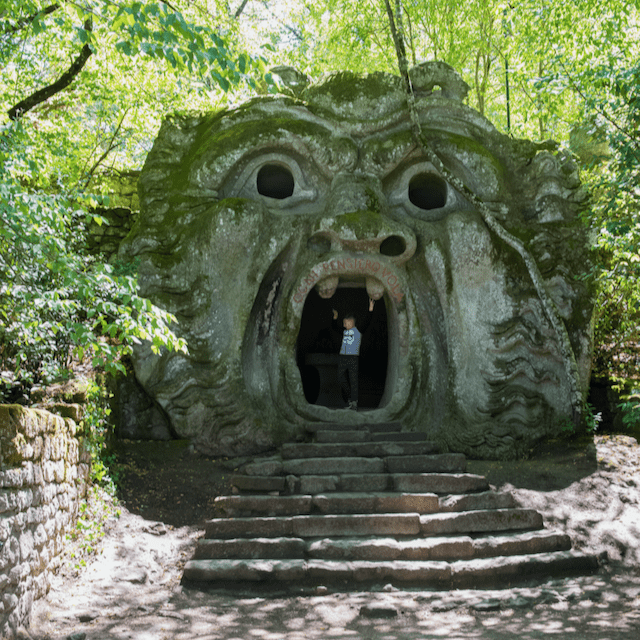Lazio and Rome
The Italian region Lazio is located between Tuscany and Naples and is best known for its capital city Rome. This is the cradle of Roman culture, of the Latin language and of our Western civilisation. You will find ancient villages and fortresses, stately Roman villas and palaces (including the Pope's country house), beautiful lakes and beaches and a varied nature in a quiet and sparsely populated region. You will be as amazed as you would be in, say, Tuscany, but without the hordes of tourists. In prehistoric times, this area was plagued by a special volcanic activity that created lakes (the old volcano craters), hot water springs and high rock formations on which, in the Middle Ages, the villages were built that characterise the landscape of Lazio. The region is therefore particularly suitable for a varied holiday by camper, car or motorbike. Are you looking for peace and quiet, culture, nature, (water) sports or gastronomy? Lazio will offer you more than enough of all this! During this reportage, we stayed at well-maintained campsites and camper van sites, often right at the water's edge. This road trip starts at Lake Bolsena in the north of Lazio and runs via Rome to the white beach village of Sperlonga in the south back up through the beautiful inland of Sabina (the Sabine Hills). Andiamo!
Total distance of the route: 719 km
Bolsena
You are only really in Lazio when you approach the town of Bolsena, but the motorway between the Orvieto exit on the motorway and Bolsena is already fantastically beautiful. The sight of Orvieto, a town built on a volcanic tuff rock, puts you right in the mood for this route. After Orvieto, the road winds to the centre of the historic town of Bolsena, on the shores of the lake of the same name. The history of this town goes back centuries and has produced both the miracle of the bleeding host and the legend of Santa Cristina, which is still kept alive in the local community. Park your campervan, car or motorbike in one of the car parks near the village and take a walk through Corso Cavour, past the square with the church of San Francesco, through Corso della Republica to the church of Santa Cristina. Then get lost in the alleys towards the upper medieval town and climb up to the Rocca Monaldeschi, a 14th century castle that towers over the town and offers a panoramic view of the lake.
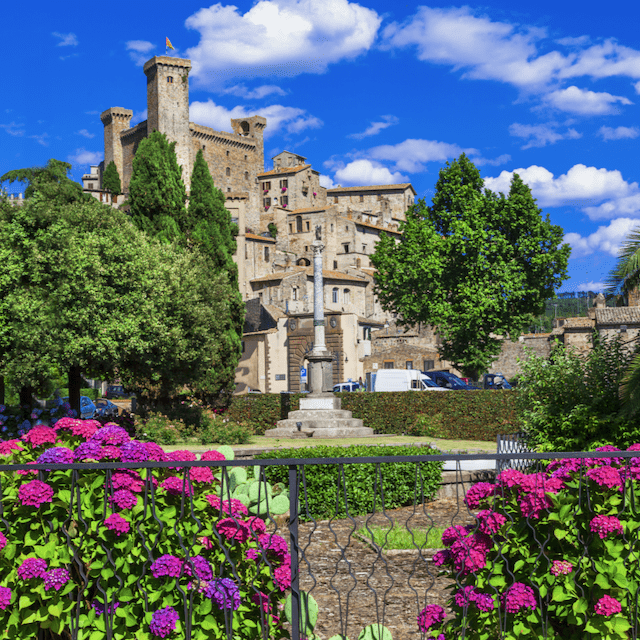

Lago di Bolsena
Bolsena is an excellent starting point if you are looking for a campsite for one or more nights along the lake. Lago di Bolsena is not only the largest lake in Lazio, but also the largest volcanic lake in Europe. You literally swim, surf, sail or cruise on an old volcanic crater filled with crystal-clear water, surrounded by hills and lava ridges. The lake has a circumference of 43 kilometres and is perfect for a tour by car, motorbike or bicycle. If you drive clockwise around the lake, Montefiascone is the first on your way. It towers high above the lake and can be recognised by the large dome on the Duomo. Here, the famous Est! Est! Est!!! wine is produced here. Further along the route along the lake, you will find the picturesque fishing villages Marta and Capodimonte. There are 2 little islands on the lake, Isola Martana and Isola Bisentina. The first is private property, the second you can visit with a guide. More to the north, you will find numerous vineyards on the flanks of the surrounding hills and the beautiful village Gradoli.
Civita di Bagnoregio
On leaving Bolsena, set your GPS to 'Bagnoregio' and enjoy the winding road through a dry hilly landscape. In Bagnoregio, follow the indications 'Civita di Bagnoregio' until you see the parking area for buses and motorhomes at the bottom of the centre of Bagnoregio. Buy your ticket here to visit the castle, which is on the list of 'most beautiful castles in Italy'. After a pleasant walk through the suburban part of the town (duration: 15'), the castle appears in the distance. It stands breathtakingly beautiful on a lonely rock in the landscape and can only be reached by a pedestrian bridge. Although the castle is nicknamed 'the dying city', it is still inhabited and there are a few souvenir shops, bistros and gelaterias where you can relax in such a historical setting.


Viterbo and Lago di Vico
Viterbo is an ancient Papal city on the Roman Via Cassia, the historical road between Rome and Florence. When you drive into the city, you will notice how well the walled city with watchtowers is preserved. The city is a nice place to stop where the old district San Pellegrino, the Palazzo Papale and the Duomo are worth visiting. After Viterbo, a beautiful winding road follows to the next volcanic lakes of Lazio, Lago di Vico and Lago di Bracciano. We opted for a stop at the smallest lake, Lago di Vico. This crater lake is located in the middle of a protected nature reserve and is a wonderful stop for a picnic, a walk in the woods or a swim in the lake. On the eastern side of the lake, you will find the monumental Villa Farnese, the largest country house ever built by the Romans.
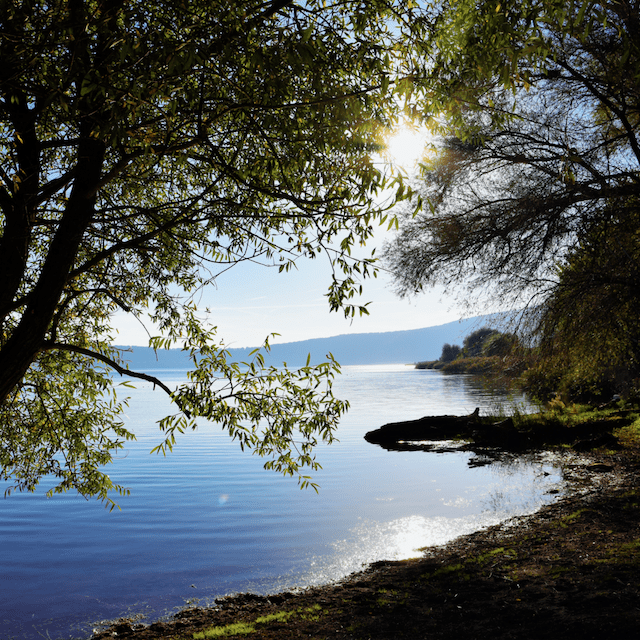

Cerveteri and Ostia Antica
History lovers will certainly enjoy the region southwest of Rome. Between Cerveteri and Osta Antica, you drive along the Via Aurelia, one of the oldest roads in our civilisation (3rd century BC). Cerveteri was a base of the Etruscans, the people who before the Romans laid the foundation of our modern civilisation and traded with the Greeks. You can visit the Etruscan necropolis, a site where the life of the Etruscans in Cerveteri becomes tangible. Even more impressive is Ostia Antica, the ancient port of Rome and according to experts the best preserved Roman city in Italy. You imagine yourself back in the 5th century on the cobblestone road, along the (bath) houses and shops, in the temples or in the theatre.
Castelli Romani
Exit 23 of the Rome Ring Road leads you to Castel Gandolfo, one of the hill towns where the Romans built their luxurious villas, country houses, castles (hence the name), parks and gardens. This is understandable, since the climate in the hills is much more pleasant than in sweltering Rome. The 17 hill towns are within a stone's throw of each other and should definitely not be missed on this road trip. Castel Gandolfo turned out to be a good starting point for a round trip, as you will find several RV parks here. In this village, the summer residence of the Pope is worth visiting, as well as a dinner in the only culinary street or a walk along the small lake. We did a roadtrip of the 17 villages, where we liked Castel Gandolfo and Nemi (the strawberry village) best, and Rocca di Papa looked the most impressive. Please note that many of these medieval towns are tiny and not accessible by motorhome. Always look for a parking space outside the centre.
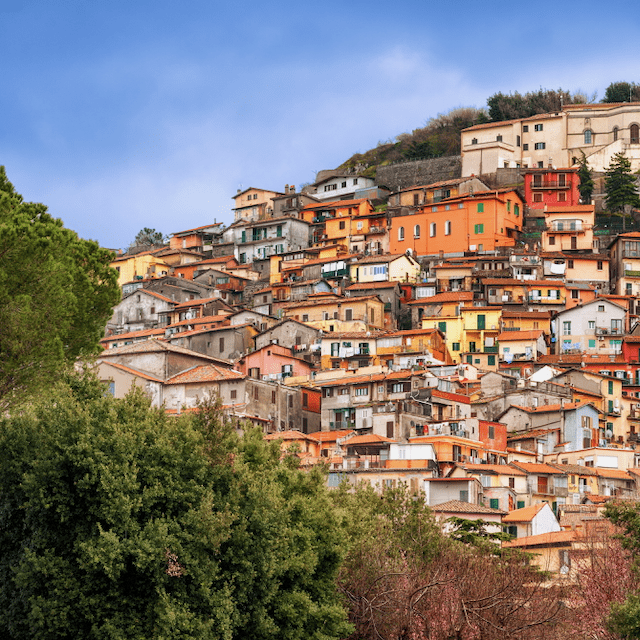

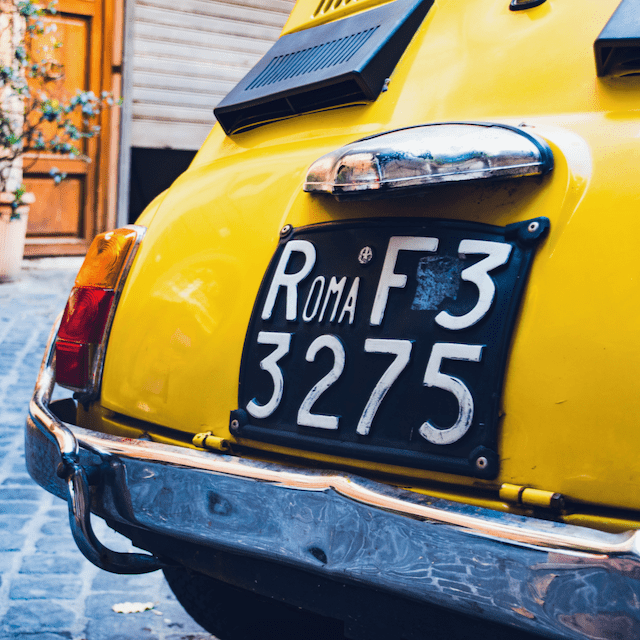
Rome
Rome is a fascinating metropolis that needs no extra promotion. From Castel Gandolfo, you can take the train or bus to the city centre, so you can leave the motor home (or car) at a motor home park and not have to drive to busy Rome. Visiting Rome during this road trip is a bit of a double whammy. One thinks that big cities have no place on a road trip because they are too busy. The other thinks that you cannot leave Rome unvisited if you are staying just a stone's throw away from it. We leave this decision to you. A Dutch couple that we met on the camper site thought it would be great to visit Rome by train and folding bike. We did this road trip with our dog in a temperature of 38 degrees, so we let Rome pass us by this time.
The Tyrrhenian coast from Anzio to Sperlonga
After the medieval villages, the crater lakes and the historical sites, it was time for ... the sea. If you know that a Tuscan inland follows, you realise that few provinces in Europe are as diverse as Lazio. We chose the coastal strip between Anzio and Sperlonga. Anzio is a larger coastal city, especially known for the Allied landing in 1945. The American war cemetery is a good place to stop before starting your beach trip. Between Anzio and Sperlonga, there are 91 km of bathing resorts, camper sites and campsites. Plenty of choice. The most beautiful is at the very end: Sperlonga. Its location on a rocky promontory, the whitewashed houses, the picturesque centre and the long sandy beach make Sperlonga a small paradise by the Tyrrhenian Sea.
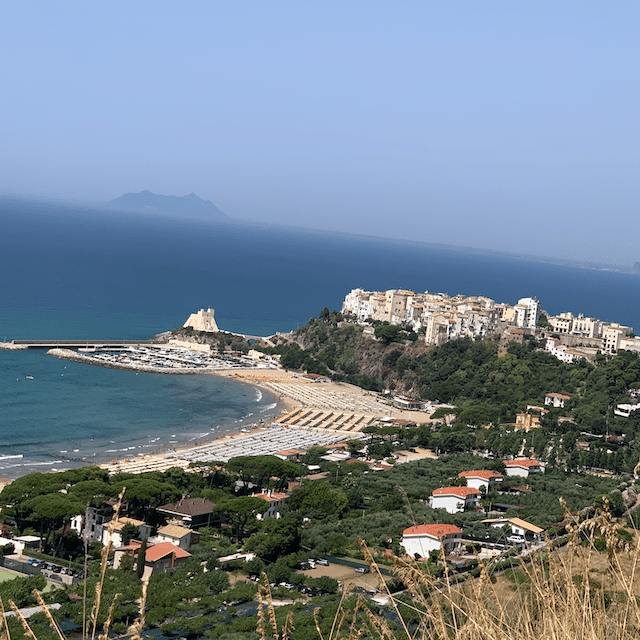
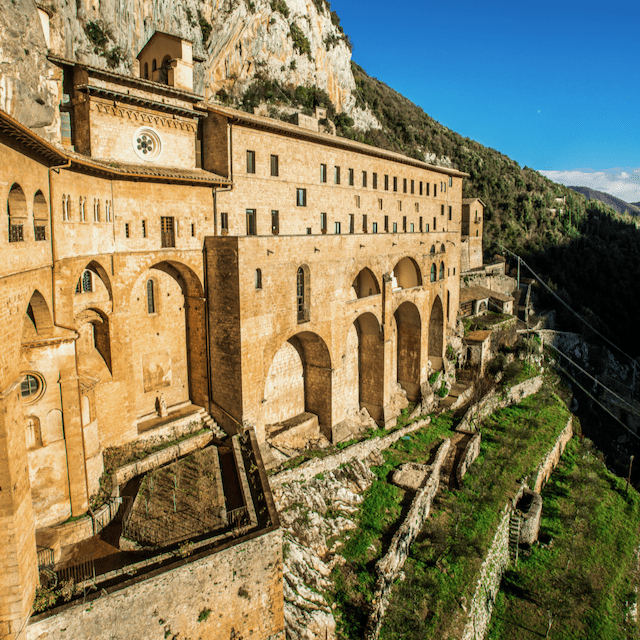
Through sandal country to Subiaco
After Sperlonga, we head back inland along a network of hilly provincial roads. This is 'slow travel' at its best. We set sail for the Monti Simbruini Regional Park, a protected area with peaks up to 2000 metres. This area of Lazio is also called 'sandal country' because of the many abbeys and monasteries. The final destination of this part of the route is Subiaco, where Benedict had a monastery built around the cave where he stayed for years after his flight from decadent Rome. The monastery is an impressive structure, carved into the rock at the edge of a ravine. But Subiaco is also a very nice village, where it is lovely to stay. Below, on the banks of the river, is a large parking area where you can park your camper, car or motorbike.
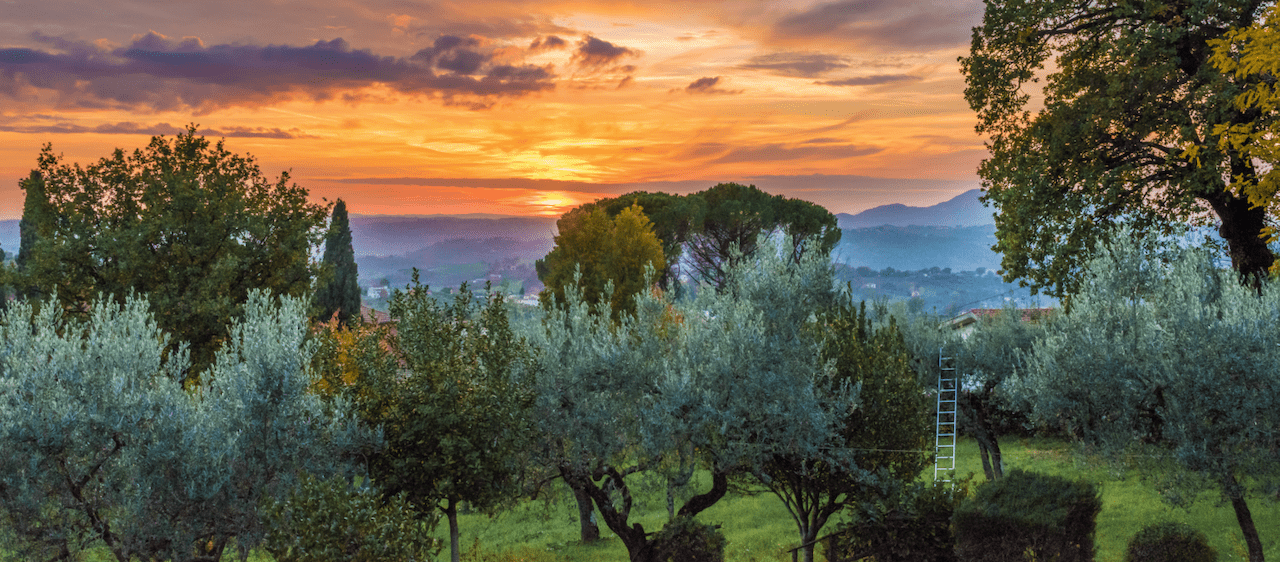
Tivoli
As mentioned before, Lazio is a historical volcano area. This has not only resulted in beautiful crater lakes with lava ridges, but also in sulphurous springs. In ancient times, these springs attracted many Roman rulers, who built impressive holiday houses in Tivoli. Villa d'Este is the most famous and is located right in the centre. This well-preserved summer palace with its garden full of decadent water features is well worth a visit. Hadrian's Villa is located just outside the centre and is probably the largest and most spectacular that the Romans ever built. Unfortunately, only ruins remain as silent witnesses of the luxury that the Romans found in the fertile and hilly area outside Rome with its mild climate.
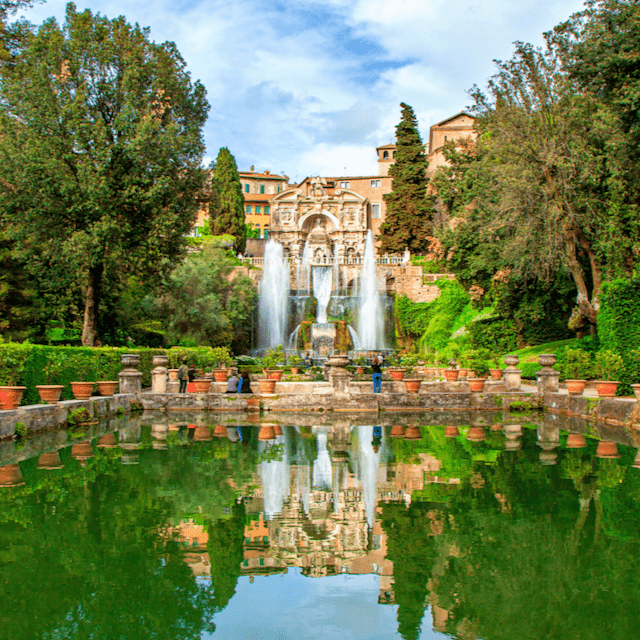
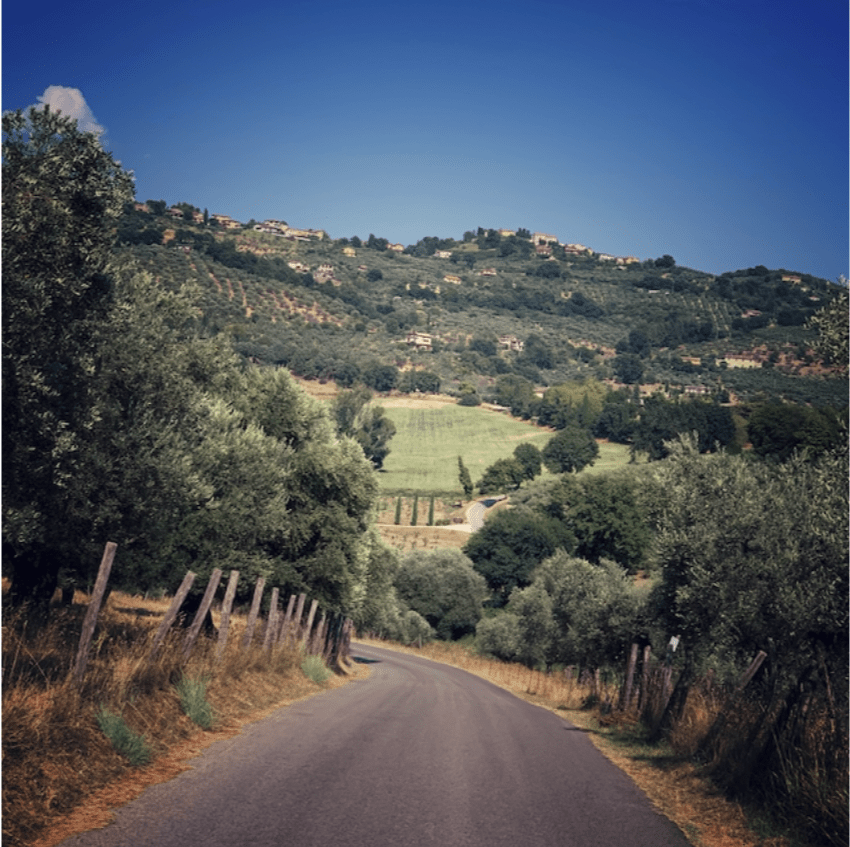
The Sabine Hills (Sabina)
Between Tivoli and Rieti was the surprise of this road trip. There, you will find a beautiful hilly area that immediately reminds you of Tuscany. The long stretches of green hills, dotted with olive trees, are yet another proof of the special landscape diversity that Lazio has to offer. It is bizarre that this area is not advertised in any tourist brochure. We hardly met any tourists there. A local inhabitant knows this because of the 'farmer's mentality' that still prevails in this region, in which the production of olive oil has priority over all other activities. Be sure to visit the Benedictine abbey in Farfa, park the camper or car in Montopoli (what a view of the surroundings!) and make a stop in Collevecchio, a small medieval village where time has stood still. But above all enjoy the tranquillity and the beautiful landscape.
Back to Orvieto
Time for the final part of this fantastic road trip through the Italian province of Lazio. After Collevecchio, you keep on driving in the Sabine hills for a while, before the motorway beckons you to the North. Don't want to lose the Lazio-feeling yet? Then there are two more interesting stops along the route. Sacro Bosco in Bomarzo is a Dali-like fantasy forest with mythological images and Sant'Angelo di Roccalvecce is an almost deserted but fairytale-like village with wall paintings. Ideal stops for Nomads with children on board or fantasy and fairy tale lovers. After Sant'Angelo di Roccalvecce, the return journey is calling. Unless you make a little diversions along the Bolsena Lake for a last dive on one of the many 'free beaches' you find along the lake.
